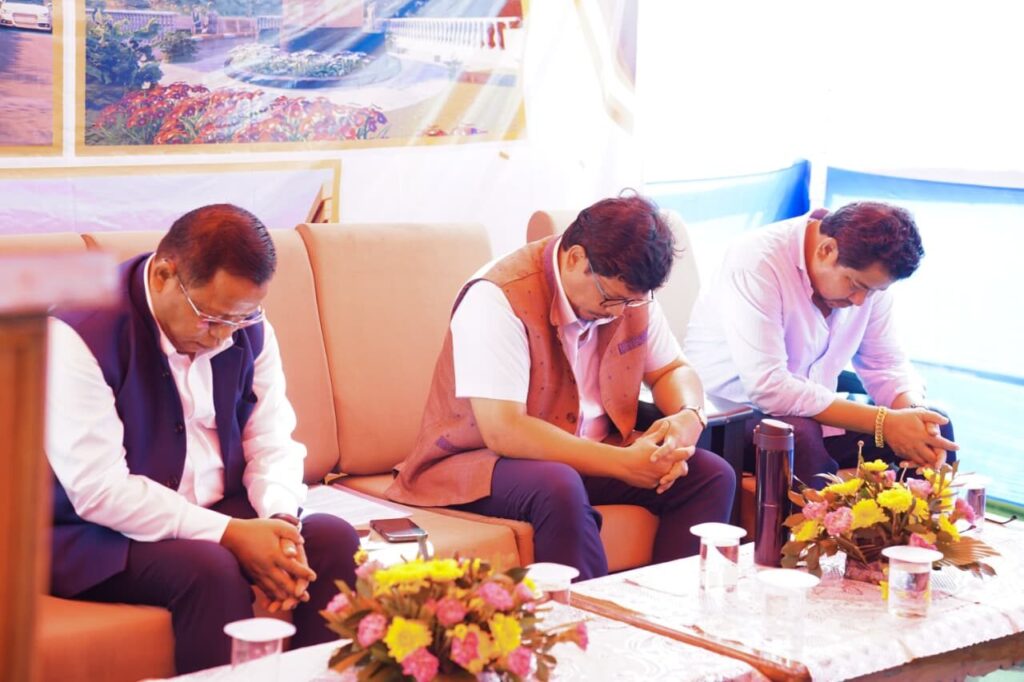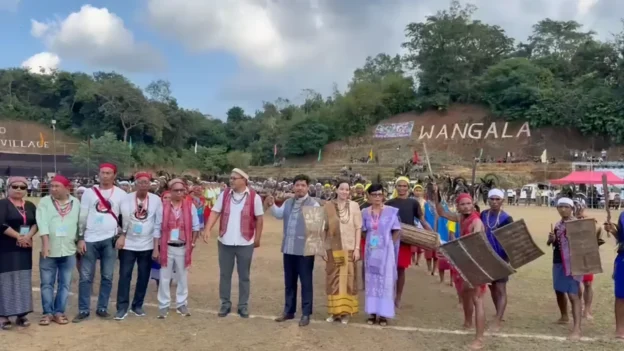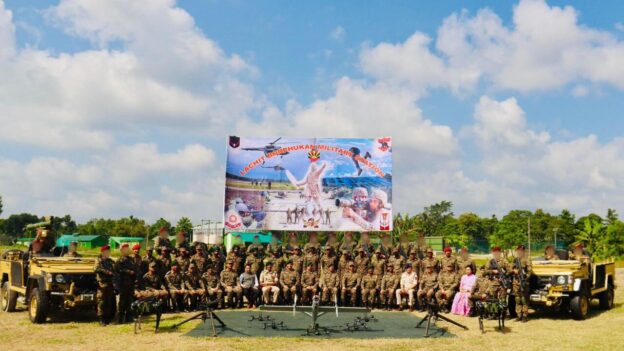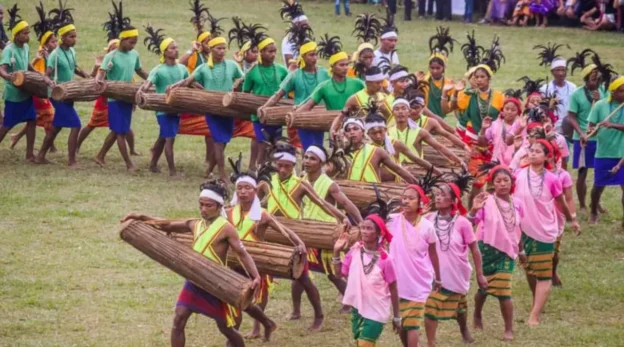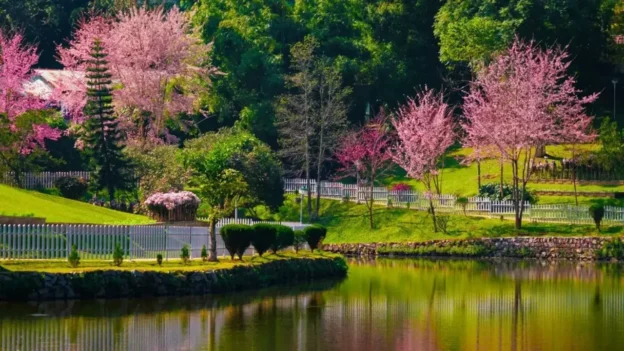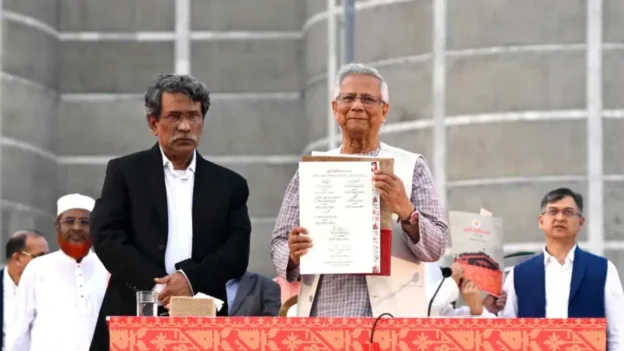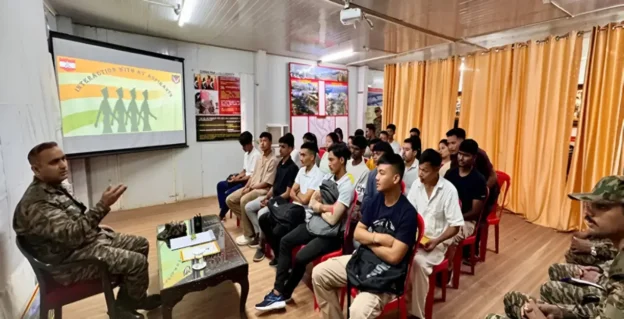History has a way of whispering through time — in stories told by elders, in names etched on stone, and in memories that refuse to fade. In the quiet town of Tura in Meghalaya’s West Garo Hills, one such story has endured for over a century — the story of 456 brave men from the Garo Hills who, in 1917, left their homes to serve in the faraway battlefields of France during World War I. They were part of the 69th Garo Labour Corps, recruited by the British Empire to assist Allied forces in the Great War.
Today, that story came alive once again, as Meghalaya Chief Minister Conrad K. Sangma laid the foundation stone for the reconstruction and beautification of the historic Cenotaph at Babupara, Tura — a monument built in memory of those men whose courage and sacrifice became an inseparable part of Garo history.
The ceremony was not just an official event, but an act of remembrance — a reclaiming of history that had been shaken earlier this year when the original cenotaph was demolished without public consultation. The demolition, done in the name of “renovation,” sparked widespread outrage and grief across Garo Hills. The people saw it as a wound — not merely to a structure, but to their collective memory.
For decades, the Cenotaph had stood as a sacred site where families, schoolchildren, and community leaders gathered every July 16 to observe Garo Labour Corps Day — a solemn day of remembrance for those who never returned home. Of the 456 who were sent to France, only about 120 came back. Those who returned carried deep scars, both visible and unseen, and their homecoming in 1918 became a day of tribute to all who had served. Every year since, the community has gathered to lay wreaths, light candles, and remember the men who fought a war not of their making, but one that history would remember through their service.
When the cenotaph at Lower Babupara was bulldozed earlier this year, the outrage was swift. The Mother’s Union of Garo Hills led the protests, condemning the act and questioning how such a historic site could be destroyed in the name of development. “We were told it was for renovation,” the members had said, “but destroying a monument is not renovation.”
The public outcry forced the district administration to step in. The Deputy Commissioner met with civil society leaders, the Mother’s Union, and citizens to assure them that the proposed commercial complex on the site had been halted. Yet, an RTI later revealed that the Tura Municipal Board had indeed planned a commercial complex on the historic site. “The revelation that the project is a commercial complex has deeply wounded the sentiments of the local populace,” said Sume Sangma, Secretary of the Mother’s Union, citing the RTI response dated February 24, 2025. “It exposed the discrepancy between what was told to the public and what was documented.”
Amid growing discontent, Chief Minister Conrad K. Sangma intervened. In March, he met with representatives from the Mother’s Union, civil society, and local leaders, assuring them that all activities at the site would be halted. He promised that a committee — including historians, indigenous leaders, and civil society members — would oversee the rebuilding with full transparency and consensus.
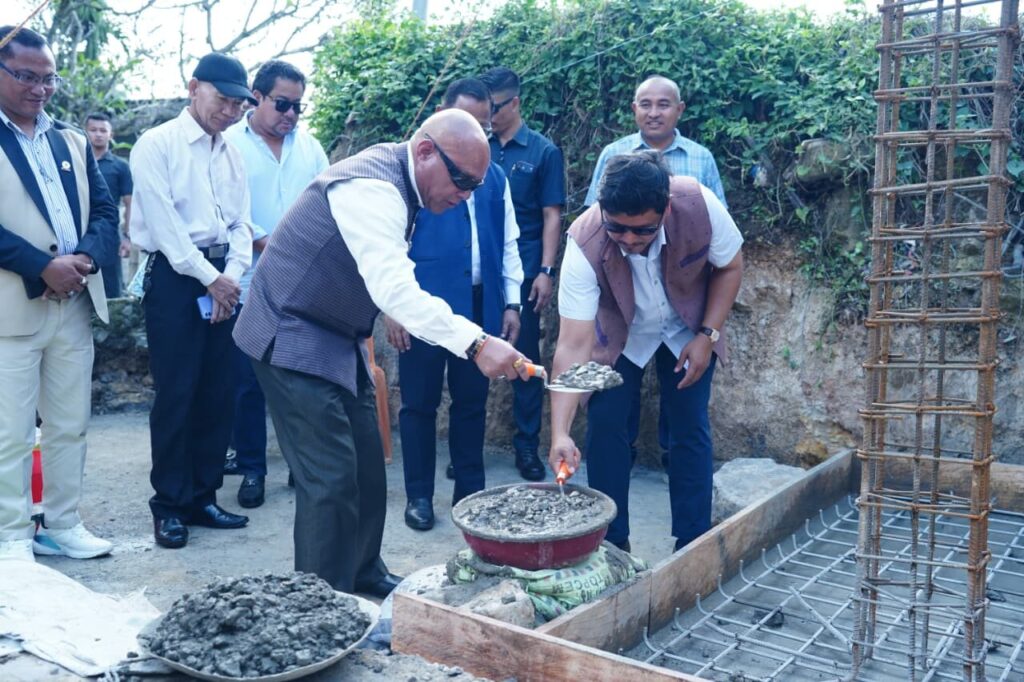
Today, that promise took form. At the foundation-laying ceremony, attended by Cabinet Minister and Chairman of the Committee for the Preservation of Garo Culture and Heritage, Marcuise N. Marak, Minister of Arts and Culture Sanbor Shullai, and other dignitaries, the Chief Minister said, “A cenotaph is a very symbolic and important monument. The one in Babupara that honours the Garo Labour Corps is very close to the people of Garo Hills.”
Expressing gratitude to the committee members, religious leaders, and civil society for their sustained engagement, he added, “Over the last couple of months, extensive deliberations have helped give shape to the new design of the cenotaph. The new design is simple yet dignified, and when visitors come, it will evoke a deep sense of respect and reflection.”
Addressing descendants of the Garo Labour Corps, he said, “Once the new structure is completed, we will honour all those who served — both those who laid down their lives in foreign lands and those who returned home — in a befitting manner.”
The Chief Minister also called upon the Committee for the Preservation of Garo Culture and Heritage to document the oral histories and family records of the Garo Labour Corps. “The government will extend full support to undertake this research,” he said. “In the past, as a community and as governments, our research and documentation have been inadequate, and much has been lost. We must change that.”
He further suggested that such important monuments should use modern technology to provide visitors with historical information, ensuring that future generations understand the significance of these sites.
For many in the audience, the ceremony stirred both pride and sorrow. The cenotaph that once stood tall may be gone, but its rebuilding signifies more than reconstruction — it represents healing, remembrance, and the reclaiming of a legacy that had almost been erased.

As the sun dipped behind the Garo Hills, the crowd dispersed slowly, some pausing to look at the newly laid foundation. For them, it wasn’t just a stone set in place — it was a promise that history would once again stand tall, in dignity and remembrance of the men who carried not weapons, but courage, across oceans and battlefields.
The new Cenotaph may not bring back the aura of the old, but it carries the same heartbeat — one that will keep alive the stories of the 69th Garo Labour Corps, their journey to the war-torn fields of France, and their enduring spirit. It is a tribute not only to the men who went to war but to a community that continues to remember, with pride and pain, the price they paid for history.

